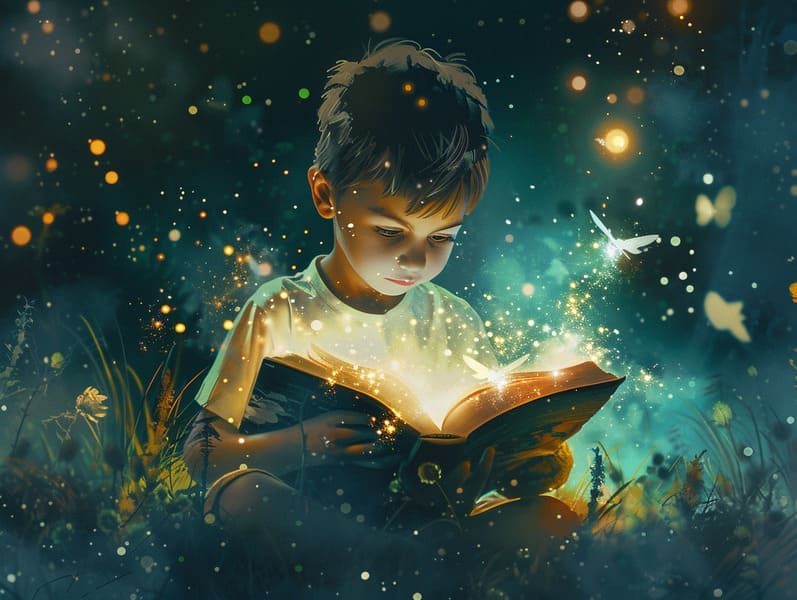The Evolution of Popular Fairy Tales with the Enduring Charm.
The Evolution of Popular Fairy Tales with the Enduring Charm.
Blog Article

Famous fairy tales have deep roots. These stories have been recounted from one generation to the next long before they were ever published. They developed from a variety of cultures, including Middle Eastern traditions. They were initially transmitted among mature audiences, often carrying themes and messages mirroring the societal norms and beliefs of the time.
The famous Grimm duo, Jacob and Wilhelm, were among the first to gather many of these beloved tales. Their collection, "Grimm's Children's Stories," included tales like "The True Bride," "Little Brother and Little Sister," and "Snow-White and Rose-Red," which have since become staples in the world of iconic fairy tales. Similarly, Hans Christian Andersen's enchanting narratives, such as "The Mermaid," and "The Little Duckling," have captured hearts worldwide, solidifying their place in the pantheon of timeless fairy tales.
Despite their historical roots, these tales remain as applicable as ever, especially as nighttime stories for kids. These delightful tales are now available in multiple formats, including colorful picture books, magical animations, and online fairy tales.
Their lasting presence can be linked to several whimsical characteristics:
Life Lessons: Traditional fairy tales often offer important moral lessons. Fairy tales like "The Boy Who Cried Wolf" teach the merit of sincerity, while "The Tortoise and the Hare" stress the merits of perseverance and meekness. These tales offer kids clear distinctions between good and bad, guiding their moral compass in a kind yet important way.
Kindness and Comprehension: Fairy tales frequently feature individuals facing problems and hurdles, inciting readers to feel with their struggles and back their triumphs. For instance, "The Story of Beauty and the Beast" illustrates the importance of looking beyond appearances to perceive the inner being of a person, promoting awareness and perception.
Cultural Understanding: Many old fairy tales are rich in the cultural contexts from which they originated. Reading these tales can provide illuminating insights into different social structures, fostering a sense of cultural respect and respect.
Inventiveness and Imagination: The fantasy-filled elements in ancient fairy tales—magic wands—promote children’s creativity. These narratives carry readers to mythical realms, awakening innovative thinking and a sense of magic that stays a lifetime.
Classic fairy tales are not only whimsical but also teaching. They work as spellbinding tools here in promoting various mind and heart abilities in young ones. When classic fairy tales are read aloud, they enhance language development by teaching new language and sophisticated sentence structures. This practice also cultivates hearing abilities and mindfulness, as young readers stay focused, anxious to see what happens next.
Furthermore, talking about the themes and characters of traditional fairy tales can nurture thought processes and thought processes. Young ones are led to pinpoint patterns, predict happenings, and make sense of cause and effect. These contemplations also aid young readers express their thoughts and feelings, advancing their emotional intelligence.
In today’s electronic age, the existence of web-based fairy tales has made these fairy tales more within reach than ever. Digital sites and mobile apps provide vast collections of traditional fairy tales that can be read or played anytime, anywhere. Fairy tales voiced are particularly favored, featuring an delightful method for young readers to experience these mesmerizing stories. Audio stories and read-to-me videos transport characters and settings to life, often complemented by spellbinding melodies and musical scores that augment the storytelling experience.
The lasting appeal of traditional fairy tales lies in their ability to transform to modern days while keeping their main lessons. Contemporary retellings of these tales often showcase more representative characters and modern settings, making them relatable to today’s audience. However, the fundamental themes of fearlessness, charity, and righteousness remain unchanged, continuing to impact readers of all ages.
Traditional fairy tales also offer a sense of warmth and knownness. They put out a structured narrative with a evident beginning, middle, and end, often finishing with the wrap-up of conflicts and the triumph of morality over wickedness. This uniformity can be relieving for kids, furnishing a sense of unchangeability in an always shifting world.
Traditional fairy tales continue to spellbind and enlighten new generations, maintaining their grandeur and relevance in modern society. As bedtime stories for kids, they present a perfect blend of allure and teaching, cultivating moral values, empathy, and creativity. The accessibility of free fairy tales online and the popularity of fairy tales read out loud confirm that these ancient stories remain within reach to new generations.
By maintaining and releasing these fairy tales, we continue to appreciate the rich tapestry of mythology and cultural heritage. Whether you are seeing a richly illustrated book, seeing a electronic library, or hearing an spoken story, the enchantment of Grimm's fairy tales is always within reach. These fairy tales point out of the undying spell of tales and its ability to tie us across time and space.
Whether you are experiencing a vibrantly illustrated book, discovering a web collection, or playing an spoken story, the allure of timeless fairy tales is always within reach.
These stories convey of the everlasting ability of narratives and its ability to unite us across generations and cultures, making a tie that fascinates and enlightens alike.